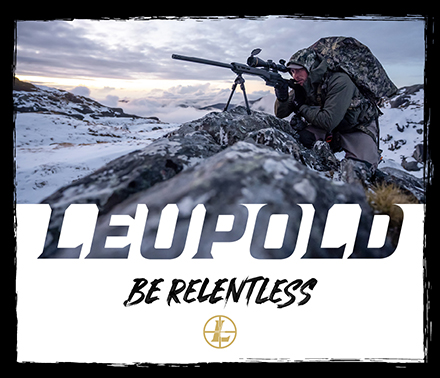A Deer Hunter's Guide to After the Shot
Waiting patiently in the cold, a deer finally comes into view. You remain frozen in place, waiting for the deer to turn or drop its head so you can lift your rifle to your shoulder. Staying calm, you follow your target with a crosshair on the vitals until the deer stops broadside to where you are sitting. You pull the trigger. Now what?
1. Get your reference points
You might find that a shot of adrenaline surges through your veins and you shake from the experience and emotion. It’s all part of hunting that is hard to describe to anyone else. In these first moments after the shot, it is important to keep focused and make mental notes. Where was the deer standing when you shot? Where did it run? Is there a landmark you can use to start looking for a blood trail? A crooked fence post, a large tree, a clump of grass…even a rock can put you in the right place. Mark the spot you were sitting with a piece of flagging tape or a natural landmark you can easily see. Remember, things never look the same when you get to where you think the deer was. Having the right angle will also help focus your search. Plus, getting reference points allows your heart rate to lower before you start looking for the downed animal.
2. Be ready
Before you move, reload your clip or magazine to ensure you have a live cartridge in the chamber, and engage the safety on your firearm. You hope the deer is down but be prepared for a follow up shot if necessary. Next, turn your scope to the lowest power. You want the widest angle of view possible if you do need another shot. Check your surroundings once again. Reorient yourself with where distant buildings, vehicles, livestock or other concerns are located. Point your firearm in a safe direction and proceed slowly. There is no rush.
3. Make the find
When you find the location where the animal was standing when your bullet found its mark, there should be hair, especially on the exit side. Look in the direction the animal ran, as you can often see the blood trail ahead, or the vegetation may be bent where the animal passed through. Don’t overlook any detail. Follow the blood trail but try not to walk on it, as you may have to come back to your last point of sign to start searching again. Flagging tape can be advantageous (just don’t forget to remove it afterwards), as you can often see a line the animal was taking by looking back at your trail. Slow and steady wins the race. Watch far ahead as you look at your feet for tracks and blood. Don’t be surprised if you are extremely close before finding your animal. They often dip in under a tree or into tall grass before expiring. Watch the animal from a distance, then slowly come closer, and make sure it has no life left in it. At this point, you can unload your gun, affix the hunting tag, and pay respect to the animal that will feed you in the coming months.
Tip: A GPS or phone app can be an invaluable tool for keeping your bearings. Mark the spot where you were sitting and where the animal was standing when you shot. If you get turned around while following the blood trail, you can use these points to reorient yourself. Don’t over-rely on technology though – batteries do run out!






